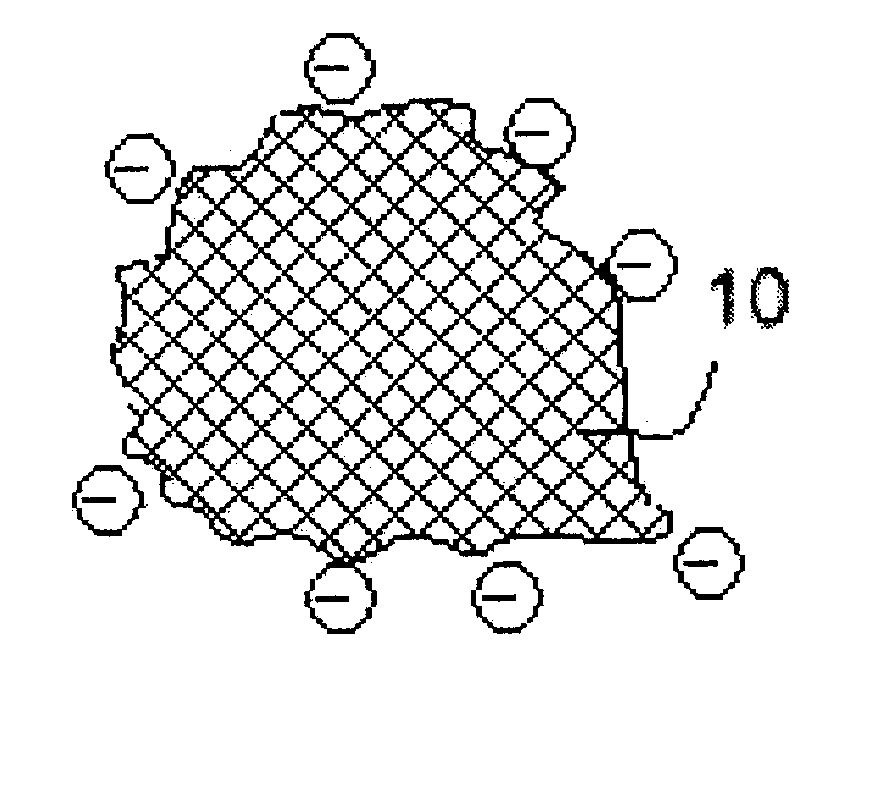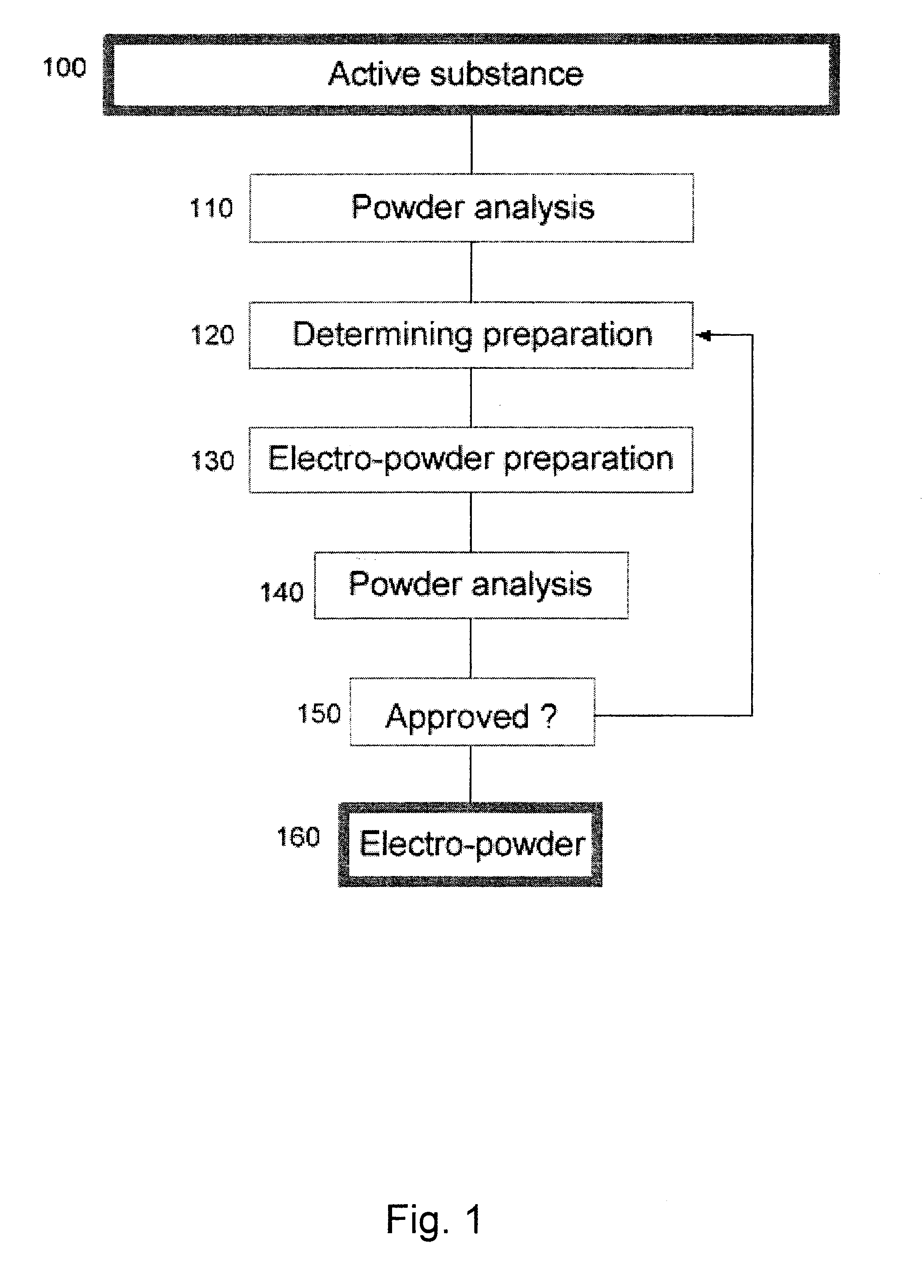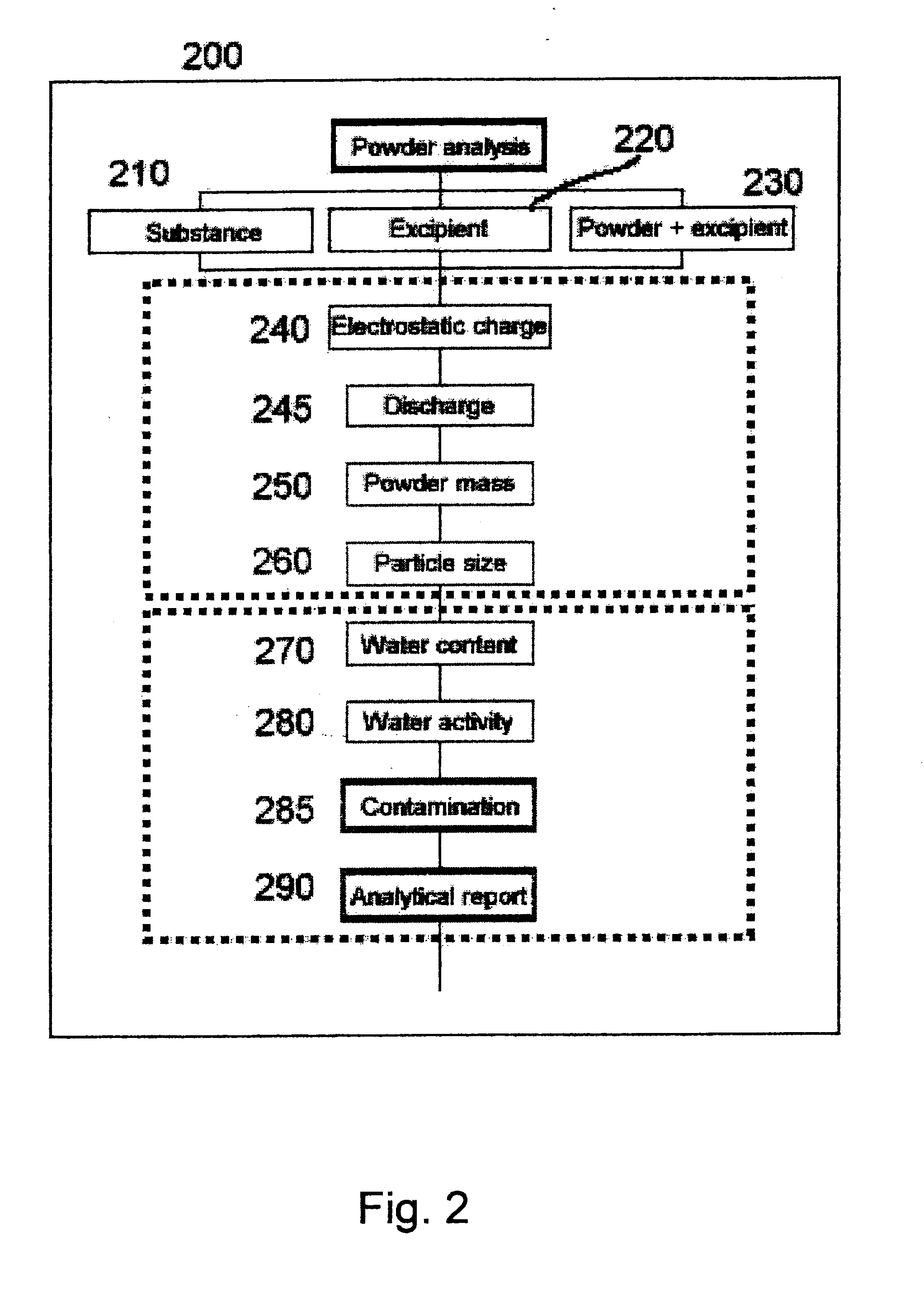Electro-powder
a technology of electro-powder and e-powder, which is applied in the direction of colloidal chemistry, pharmaceutical product form change, peptide/protein ingredients, etc., can solve the problems of ineffective delivery to the upper or deep lung, difficulty in controlling the amount of medicine emitted to the lung, and slowing down the growth of the inhaler mark
- Summary
- Abstract
- Description
- Claims
- Application Information
AI Technical Summary
Problems solved by technology
Method used
Image
Examples
example 2
The active substance nicotintartrate (NT) was tested for use in a DPI for smokers not allowed to smoke cigarettes due to medical reasons. The NT in step 300, initially being in powder form with a particle size distribution between 150-400 .mu.m was first micronized in step 310 in a manufacturing equipment like device 400 of FIG. 4 or device 500 of FIG. 5 to meet the powder specification for an electro-powder.
The NT then was analyzed in step 320 in the Andersen Impactor at 28.3 liters / minute 260. The mass of powder was determined by chemical analysis using the HPLC SpectraSYSTEM.
Powder analysis of particle size resulted in the measures
Result of the particle size analysis in step 260 was for stages 3 to 7 a 69% fine particle fraction and that is more than our electro-powder specification demand stipulating >50% fine particle fraction.
The micronized NT powder then was brought to the powder analysis for analyzing first the electrostatic charge in step 240 using the Electrical Low Pressu...
preparation 1
The preparation #1 having 90% active substance and 10% excipient is analyzed first in the Andersen at 28.3 liters / minute. The mass of powder determined by chemical analyzes using the HPLC gives:
Result of particle size analysis is for stage 3 to 7 a 72% fine particle fraction, which is better than the electro-powder specification demand stipulating >50% fine particle fraction.
The preparation #1 is then brought to the powder analysis for analyzing first the electrostatic charge in step 240 using the Electrical Low Pressure Impactor (ELPI). The preparation 1 is de-agglomerated and sucked into the instrument at 30 liters / minute and the total electrostatic charge in .mu.C is measured together with an analysis of the powder mass sucked into the ELPI. Dividing the total electrostatic charge with the powder mass will give the specific charge in .mu.C / g.
The preparation #1 then tested for discharge rate in step 245 using the Electrical Low Pressure Impactor (ELPI). The analysis is set up with...
preparation # 2
Preparation #2
The preparation No 2 having a 75% active substance and 25% excipient is analyzed first in the Andersen 28.3 liters / minute. The mass of powder is determined by chemical analyzes using the HPLC.
Result of particle size analysis in step 260 is for stages 3 to 7 a 67% fine particle fraction which is higher than the minimum electro-powder specification demand stipulating >50% fine particle fraction.
The preparation #2 is then brought to the powder analyzing step 320 for analyzing first the electrostatic charge in step 240 using the Electrical Low Pressure Impactor (ELPI). The preparation #2 was de-agglomerated and sucked into the instrument at 30 liters / minute and the total electrostatic charge in .mu.C is measured together with an analyzing of the powder mass sucked into the ELPI. Dividing the total electrostatic charge with the powder mass gives the specific charge in .mu.C / g.
Then the preparation #2 is in consecutive measurement tested for discharge rate at step 245 using t...
PUM
| Property | Measurement | Unit |
|---|---|---|
| molecular weight | aaaaa | aaaaa |
| grain size | aaaaa | aaaaa |
| grain size | aaaaa | aaaaa |
Abstract
Description
Claims
Application Information
 Login to View More
Login to View More - R&D
- Intellectual Property
- Life Sciences
- Materials
- Tech Scout
- Unparalleled Data Quality
- Higher Quality Content
- 60% Fewer Hallucinations
Browse by: Latest US Patents, China's latest patents, Technical Efficacy Thesaurus, Application Domain, Technology Topic, Popular Technical Reports.
© 2025 PatSnap. All rights reserved.Legal|Privacy policy|Modern Slavery Act Transparency Statement|Sitemap|About US| Contact US: help@patsnap.com



